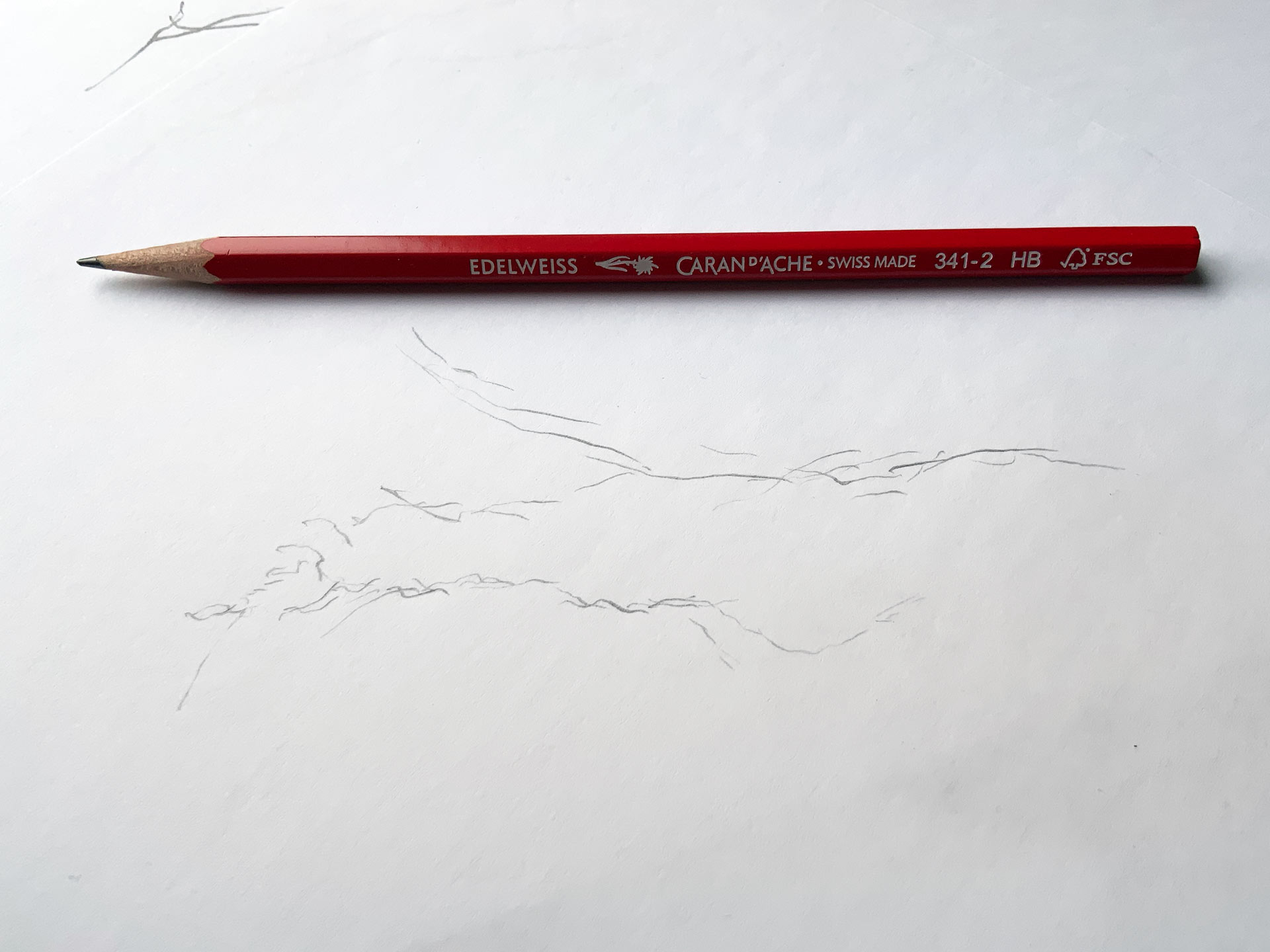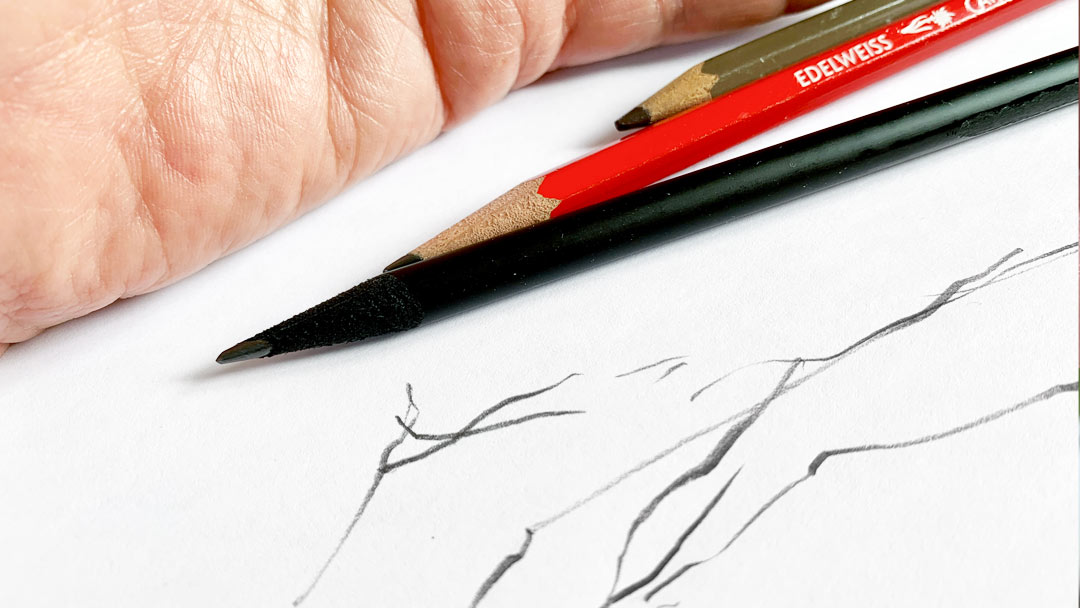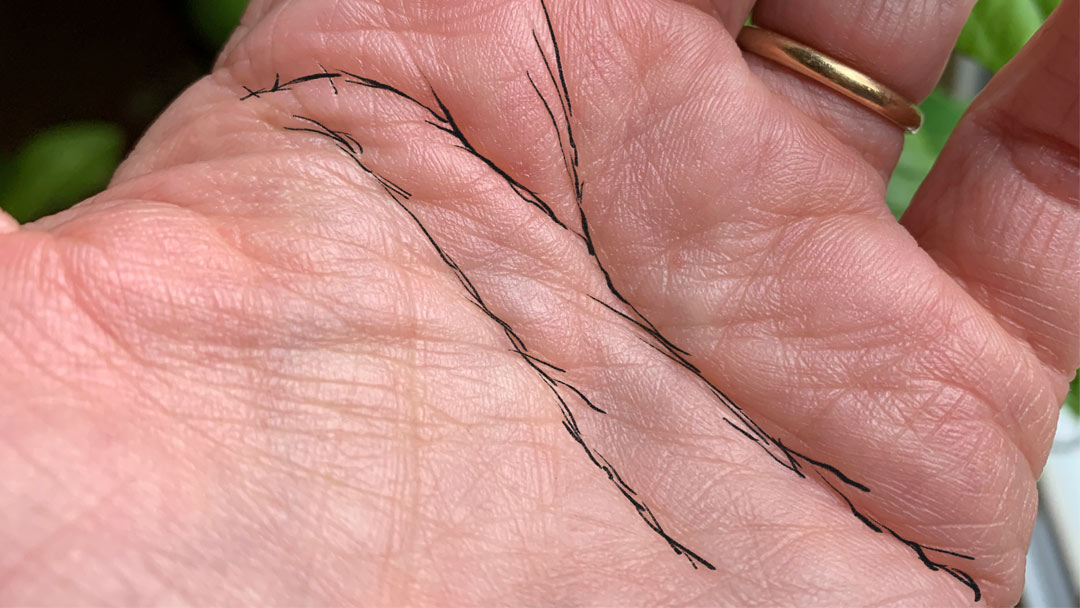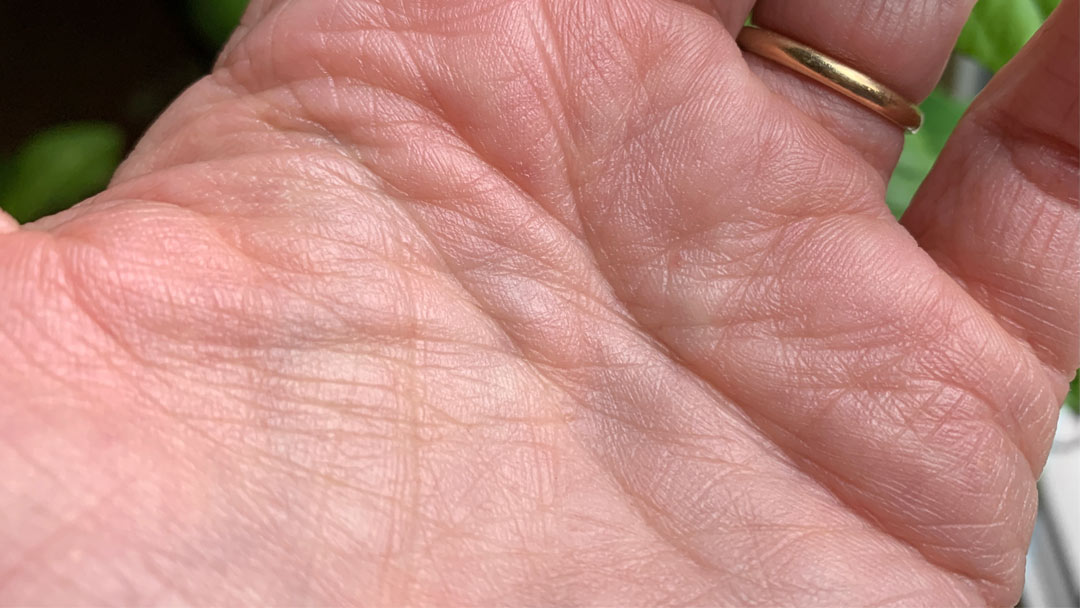Rule 1 | Let the line flutter
Lesson 4 | Observe palm lines
20 min. |
The lines and wrinkles on the palm of the hand have a formal similarity to the fluttering line, as we use it in the first rule. Therefore, we want to learn from these lines how many different lines ultimately form a line where the eye is always guided.
Step 1 | Watch and see what you shall draw ...
A video introduction to drawing palm lines
Watch the video and grab your material. Setup your workplace and have an eye on being prepared for sketching.
Script
What is the challenge in sketching palm lines?
Here it is all about the differentiated perception so that the agile line can be drawn correctly and the line flutters at the end.
If you hold your hand, with which you are not drawing, relaxed in front of you so that the palm is not stretched out, lines or wrinkles are visible on the palm, which is very similar to the lines we learn in Sketch&Draw.
We’ll start with a simple exercise that is only about the stroke, but rather about making the appearance of the single stroke as similar as possible to the template hand. It’s not about the similarity of the appearance of the hand as a whole. At the moment the focus is only on the stroke.
The hand lines consist of several lines that do not curl, but constantly move along the path in search of the way. The lines split, sometimes they join together, sometimes they end, or a new line begins. Sometimes the lines even cross.
Start to observe the lines and draw them simultaneously.
Keep your eyes on your hand and not on the drawing sheet.
It is not a bad thing if the drawing does not become a work of art. It is about perceiving and not about the correctness of the drawing. You do not look at the sheet.
Start at the edge of the hand, somewhere where the lines are clear. Maybe between thumb and forefinger.
Follow a mainline of folds and try to capture every fine detail. Draw every detail. If possible, name the angles, curves, changes of direction, endings and beginnings of the lines verbally.
Work extremely slowly and take 5 minutes.
Setting an alarm clock helps to create the necessary slowness and attention.
Okay? Yes, then happy sketching: The we are is looking forward to the upload of the two trials of sketches. And the peers are happy to give feedback.

Your drawing exercise will lool like this. Just some lines, each line fluttering but together thy forme one bigger item.

ASSIGNMENT | Make two trials of this exercise to draw your line on your palm and upload the better one here.
To upload, use the buttons further down.

Free trial
Try one lesson and decide if you want to do the whole course. Click for the free trial ...
Certificate
If you want to achieve a certificate that proves your sketching skills, get all your information here ...




